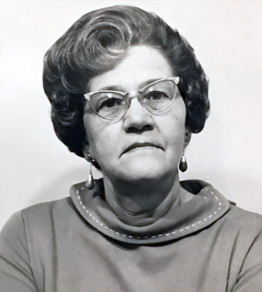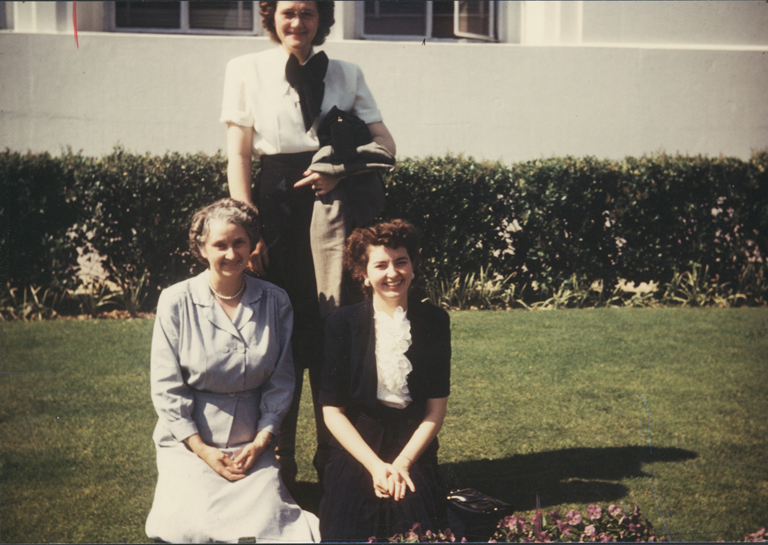
By Mary O’KEEFE
The term “policewoman,” for those of a certain age, may bring to mind Sgt. Suzanne “Pepper” Anderson, portrayed by Angie Dickinson, arresting bad guys. Or maybe even an earlier Anne Francis as Honey West, the private detective chasing down bad guys in the most stylish of outfits. Those were the television versions of how female law enforcement members did their jobs … which wasn’t quite the reality.

“Pauline
PW Copeland
PBY Coleen Cole
PBY Martin Zimmerman
1948″
The truth is Los Angeles can claim in 1910 it hired the first official female police officer in the nation, after LA social worker Alice Stebbins Wells petitioned Mayor George Alexander and the LA City Council to allow the creation of the LA Policewoman program. The measure passed and Wells became the nation’s first policewoman with powers to arrest, according to the LAPD historical page.
Prior to this, women were employed by law enforcement as “matrons” to care for female prisoners.
According to LAPD, on Wells’ first day she was given a telephone call box key, a book of rules, a first aid book and a “policeman’s badge.” This, of course, came with all the advantages of being on the police force, including free rides on trolley cars, a custom of the day for policemen. Unfortunately not everyone believed her when she flashed her badge; a trolley conductor accused her of misusing her husband’s identity. The LAPD immediately presented her with Policewoman’s Badge Number One.
One of the reasons Wells wanted female police officers was not only to take care of the female prisoners but also when questioning young girls during investigations. Her first duties, according to LAPD, included enforcing laws concerning dance halls, skating rinks, penny arcades, picture shows and other similar places of public recreation. By 1912 there were three policewomen and three police matrons in the department.
News of her appointment as a policewoman went nationwide and soon, by 1916, 16 cities and other countries had hired policewomen.
“Three years later, Mrs. Wells succeeded in persuading the University of California, Southern Division (now UCLA) to offer the first course specifically on the work of women police officers. The course was introduced by the school’s Criminology Department in the summer session in 1918,” according to LAPD.
Wells went on to be the first president of the Women’s Peace Officers Association of California in 1928. She retired after 30 years on the force.
“By 1937, 39 policewomen were employed by [LAPD]. In addition, five ‘aerial policewomen’ were appointed as reserve officers. These specially appointed aerial officers joined a previously all-male squadron of commercial and highly trained amateur pilots who were summoned to duty in situations requiring expert flyers,” according to LAPD.
Following in the footsteps of other policewomen, Pauline Copeland joined the Glendale Police Dept. in September 1943 to become one the first women in that department.
“She was part of the first group of women,” said Sgt. Teal Metts, GPD.
Metts, the historian for GPD, had found four names listed on the roster with the title policewoman by 1953. Copeland was issued a revolver and a badge, but most likely did not go out on patrol with her male counterparts.
“Women were a community officer of sorts,” Metts said.
She did work on investigations but rarely in the field, he said.
Copeland retired in March 1974 before major changes occurred on the force. In 1978, just as “Police Woman” Sgt. Pepper’s show was ending, the title “policewoman” was eliminated and “police officer” was adopted.
Policewomen who were part of GPD were offered to continue as police officers. This would mean their uniforms, which often included a white blouse and black skirt, would be replaced with uniforms identical to their male counterparts.
Today, women and men share equal training and equal responsibilities in most law enforcement agencies globally including GPD and LAPD.
On a personal note, Jerri Truhill, who was part of the Mercury 13 crew that I wrote about in the March 21 issue and who passed away in 2013, was someone I would often reach out to call especially at times like last week when my article was published on the women of the Mercury space project. I would talk to her about issues like the upcoming space walk by two women – together – for the first time at the International Space Station. How amazing – from rejecting women in space with the Mercury women to now having two women walking in space. And then I find I want to call her even more when it was released that astronauts Anne McClain and Christina Kach would not be doing a joint walk because NASA only had one spacesuit that would fit a woman. You would think that NASA would have known that prior to making the “historical” announcement.
So we will see one woman walk, which has happened before, but I would have loved to hear how Jerri would have responded.
